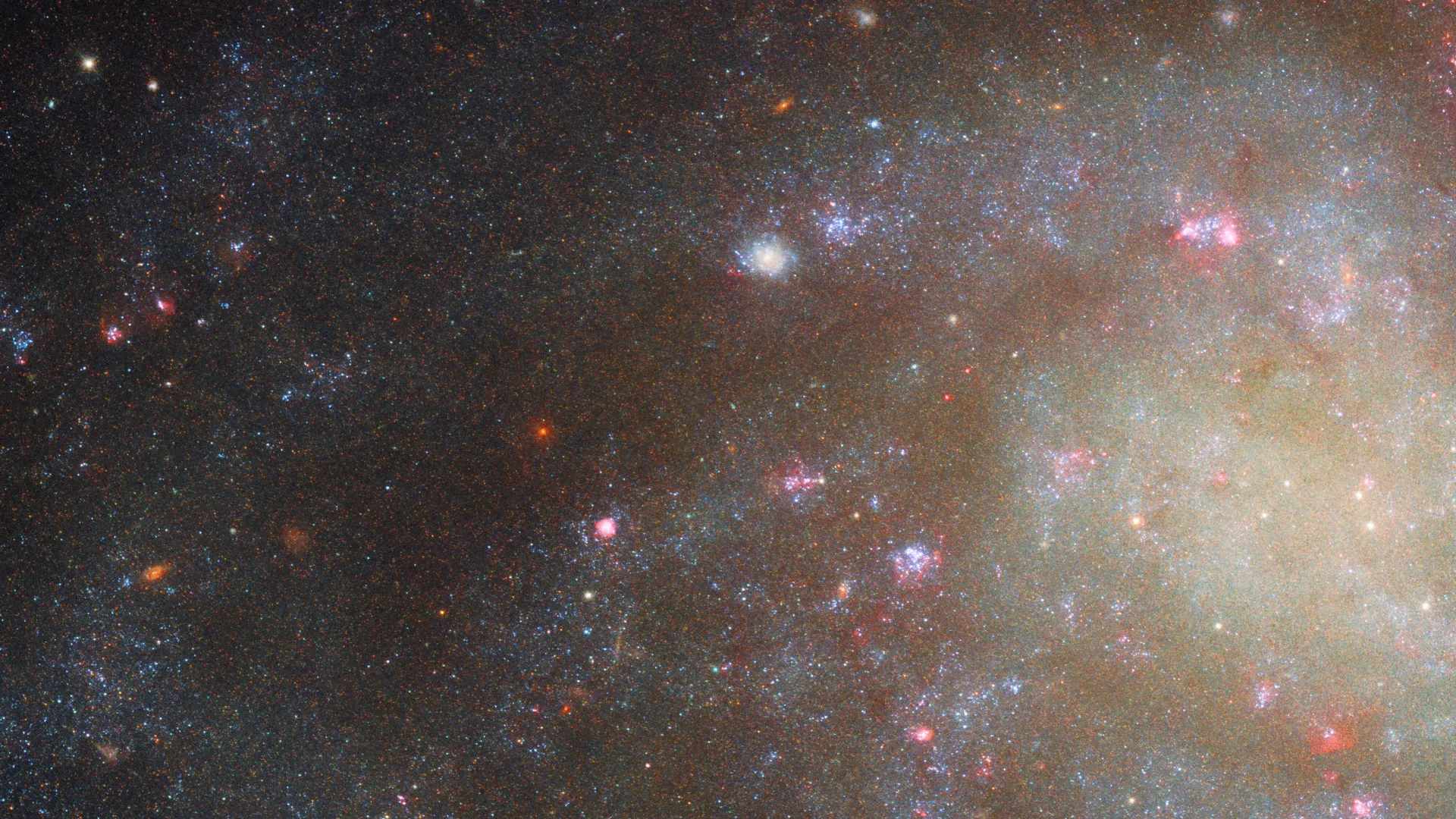Hubble spots a nearly invisible galaxy hiding in plain sight
- Date:
- August 15, 2025
- Source:
- ESA/Hubble
- Summary:
- Hubble has captured the faint beauty of NGC 45, a spiral galaxy in Cetus whose glowing pink star-forming clouds reveal hidden activity. It belongs to the rare class of low surface brightness galaxies, dimmer than the night sky yet rich in gas and dark matter.
- Share:

This NASA/ESA Hubble Space Telescope Picture of the Week zooms in on the feathery spiral arms of the galaxy NGC 45, which lies just 22 million light-years away in the constellation Cetus (The Whale).
The data used to create this portrait were drawn from two complementary observing programs. The first took a broad view of 50 nearby galaxies, leveraging Hubble's ability to observe light from the ultraviolet to the near-infrared in order to study star formation in these galaxies. The second program examined many of the same nearby galaxies as the first, narrowing in on a particular wavelength of red light called H-alpha. Star-forming nebulae are powerful producers of H-alpha light, and several of these regions can be identified across NGC 45 by their bright pink-red color.
These observing programs aimed to study star formation in galaxies of different sizes, structures, and degrees of isolation -- and NGC 45 makes for a particularly interesting target. Though it may appear to be a regular spiral galaxy, NGC 45 is actually a remarkable type called a low surface brightness galaxy.
Low surface brightness galaxies are fainter than the night sky itself, making them incredibly difficult to detect. They appear unexpectedly faint because they have relatively few stars for the amount of gas and dark matter they carry. In the decades since the first low surface brightness galaxy was serendipitously discovered in 1986, researchers have learned that 30-60% of all galaxies may fall into this category. Studying these hard-to-detect galaxies is key to understanding how galaxies form and evolve, and Hubble's sensitive instruments are equal to the task.
Story Source:
Materials provided by ESA/Hubble. Note: Content may be edited for style and length.
Cite This Page: